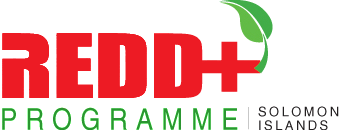The Protected Areas Act 2010 came into force on 10 February 2012. It addresses the lack of a national legal mechanism capable of protecting land areas from incompatible uses. Under the Act, the Minister can declare an area to be a protected area if, among other things, it “possesses significant … biological resources” which have “actual or potential use or value for humanity”. This could arguably apply to protecting forest areas for the purpose of carbon storage, with such an area being classified as either a “resource management area” which can be used for the benefit of customary owners or a “closed area” if the objective is to allow rehabilitation due to excessive exploitation (s. 2, 10; Protected Area Regulations 2012, cll. 8 and 9). Landowners or a non-government organisation can request that an area be declared as a protected area (s. 10).
Landowner consent required
The consent of customary landowners and other groups or persons with rights or interests in the area is required before a declaration can be made (s. 10(6)). The process for group consultations is set out in the Regulations (cl. 44)). The Act requires that declared areas be managed by a management committee, which may include ‘owners’ of the protected areas, and also requires that areas be managed according to a management plan (s. 12(1)). The Minister can amend, vary or revoke a declaration, which can be done on the request of the landowner or management committee (s. 10(8)).
While land boundaries must be accurately mapped before an area can be declared, a declaration will not change the ownership or nature of customary land tenure unless the customary owners choose to convert their title to a registered title (Regulations cl. 45). Boundary disputes between different customary owners that share a common boundary with that of a protected area must be settled by open dialogue and negotiation according to the processes set out under the Customary Land Records Act (Regulations, cl. 17).
Logging and mining prohibited in protected areas
The legal protection for areas declared under the Act appears to be quite strong. Commercial logging and mining are prohibited within a protected area and within one kilometer of the boundary of the area (Regulations cl. 61). Land-based pollution, whether intentional or negligent, of a marine protected area, is also prohibited, which could apply to run-off from logging activities (cl. 54). The penalty for contravening either of these provisions is 100,000 penalty units (i.e. Solomon Island $100,000, or approximately US $14,000).
A few applications for declarations of protected areas have now been lodged, but these cannot currently be processed as the Advisory Committee which is required to assess the applications and implement the Act has not yet been established (s. 6).
World Heritage properties
Although Solomon Islands has been a party since 1992 to the 1972 World Heritage Convention, until recently there was no legal protection under domestic law for sites that were declared under the Convention. This deficiency has been remedied by the Protected Areas Act 2010. Under the Protected Area Regulations 2012, any area within Solomon Islands that is listed under the Convention as a world heritage site must be declared by the Minister to be a protected area (s. 10(c); Protected Areas Regulations 2012, cl. 10). To date, only one site in Solomon Islands, East Rennell in Renbel Province, has been declared as a World Heritage site, although it remains unprotected unless and until it is declared as a protected area under the Protected Areas Act 2010.

